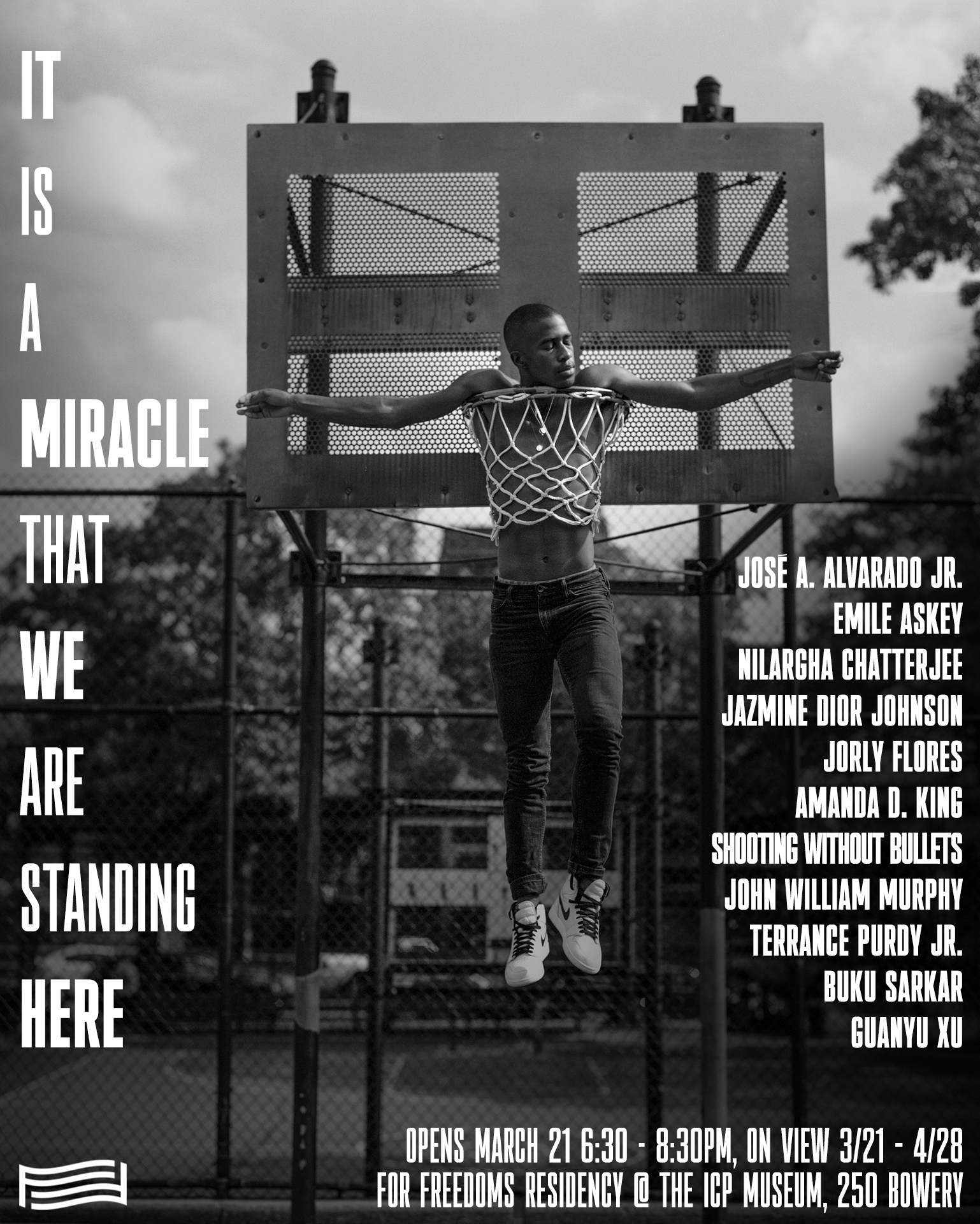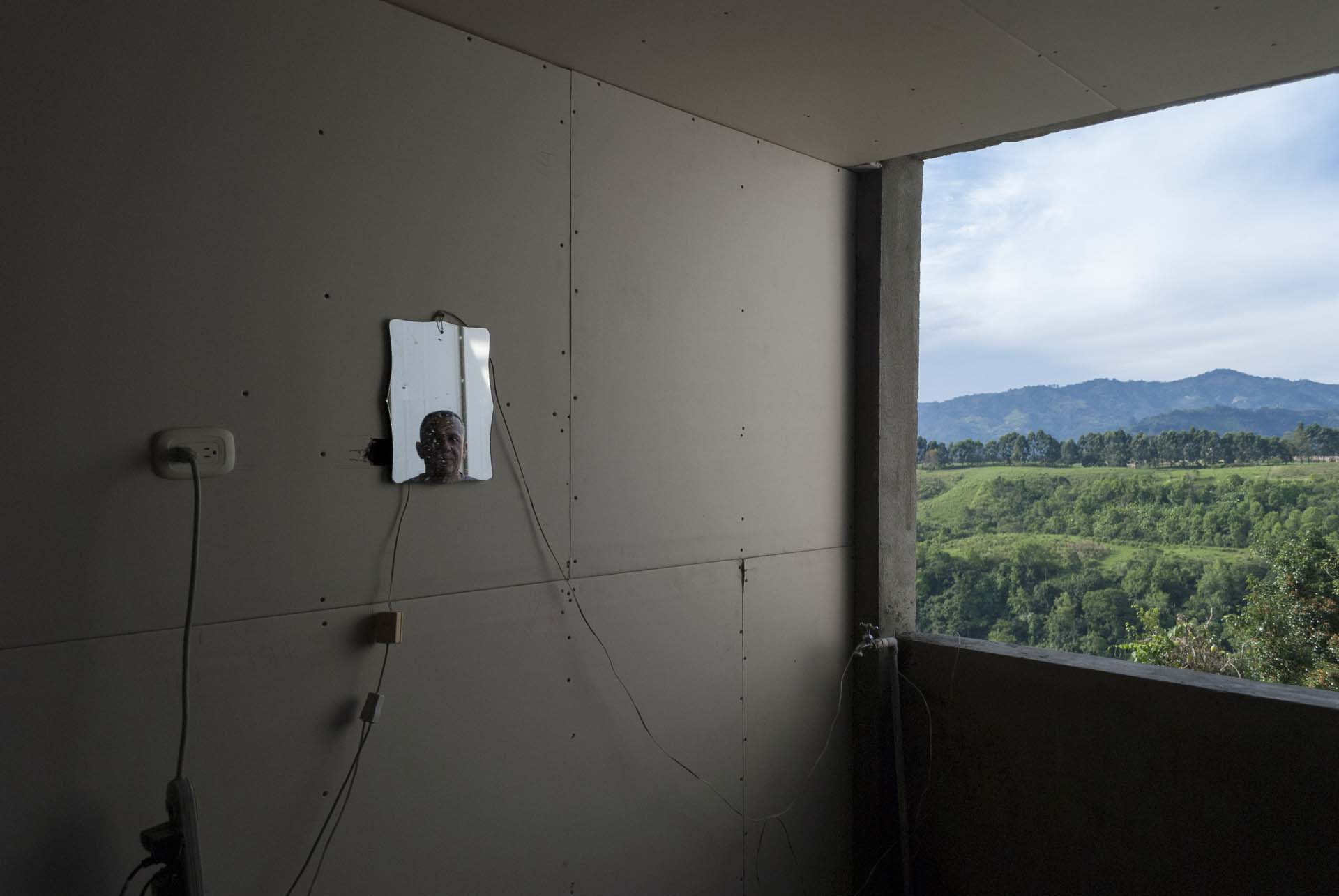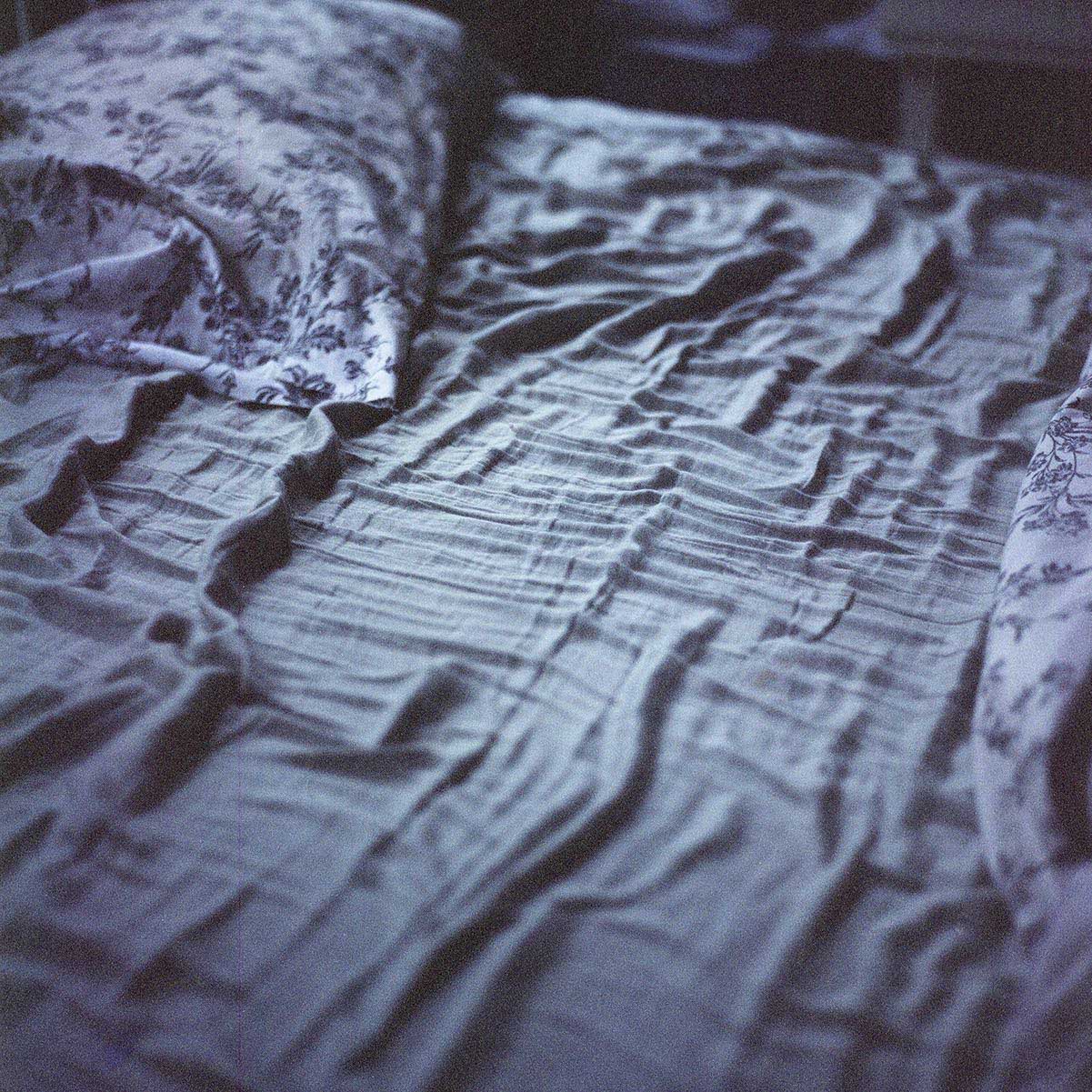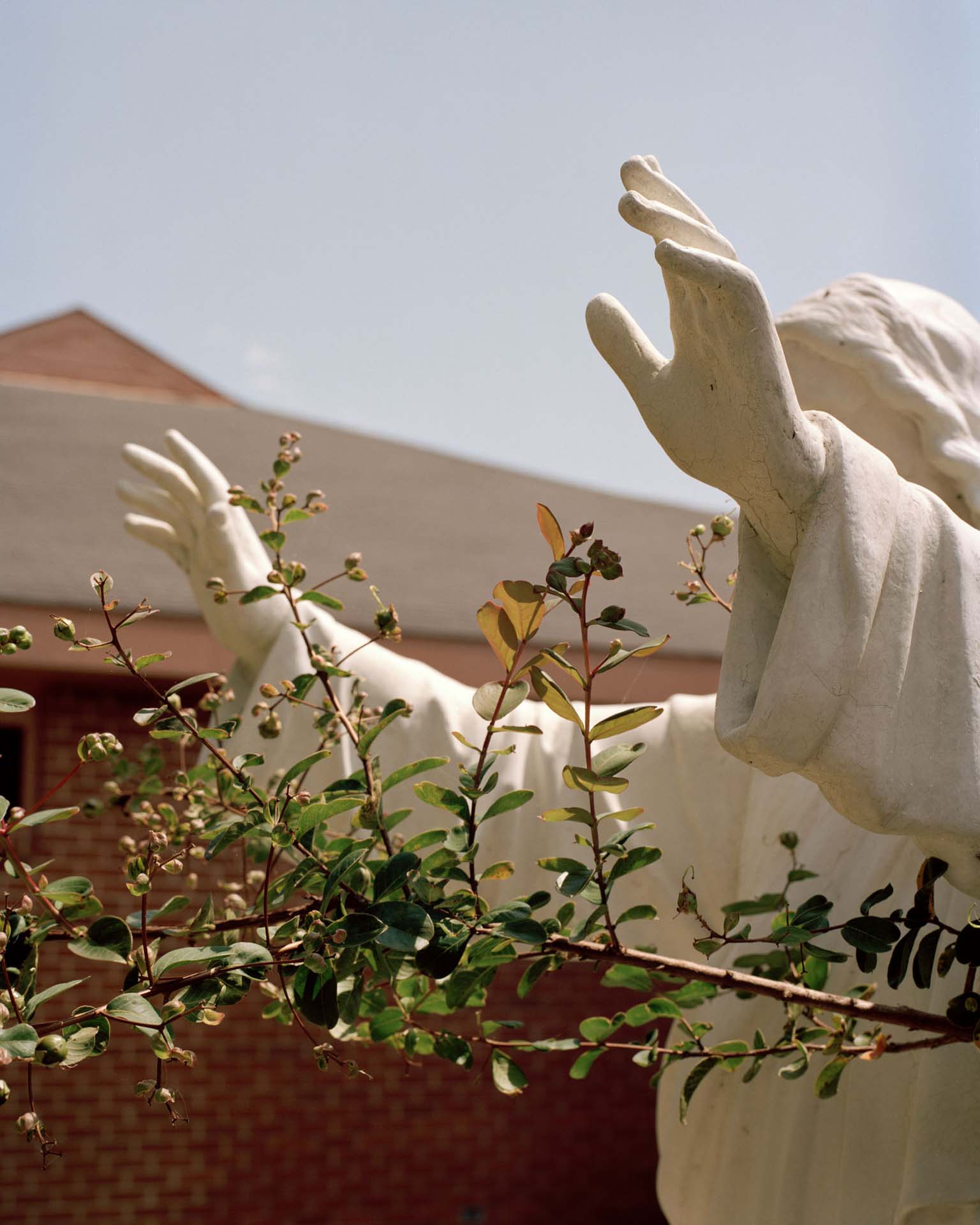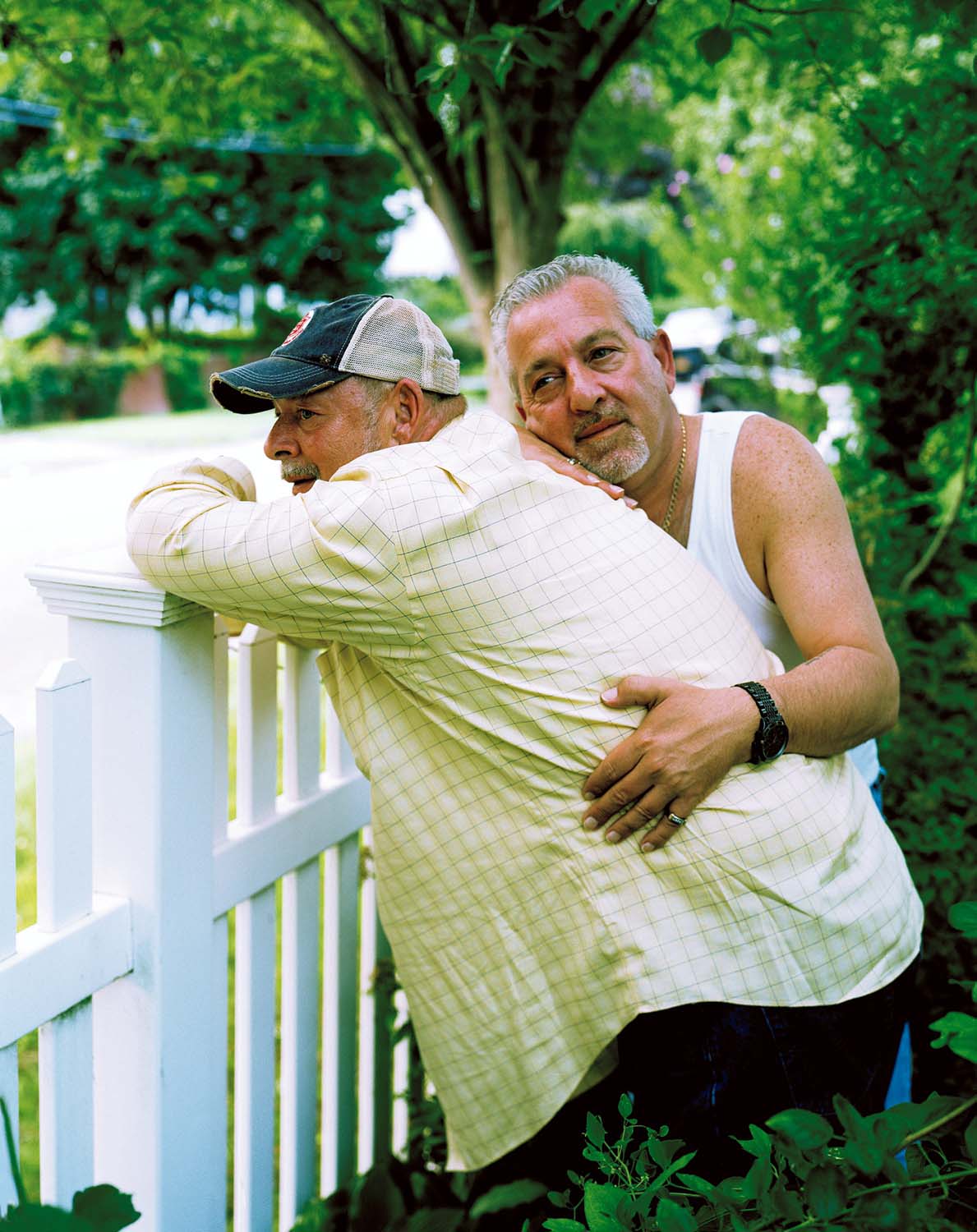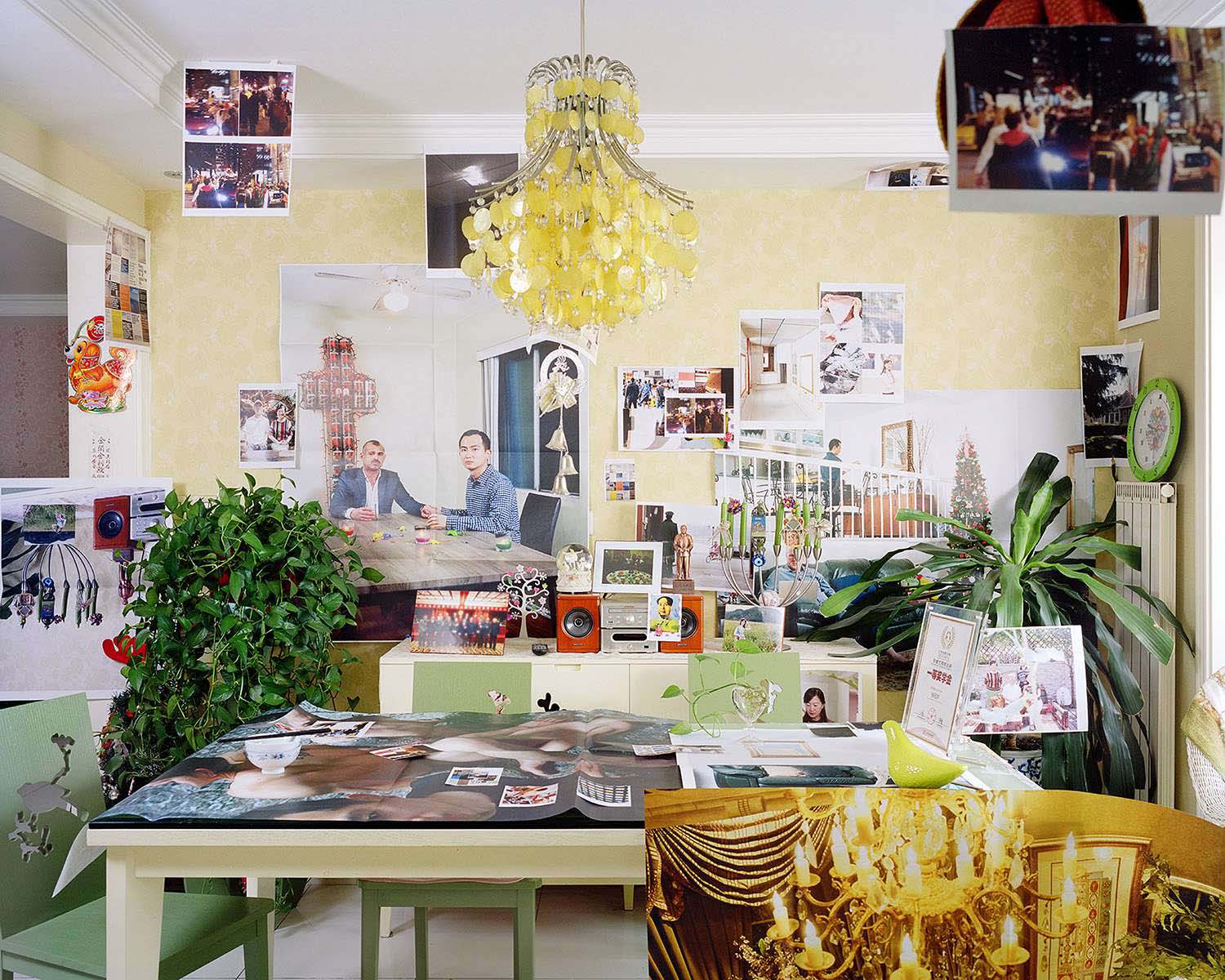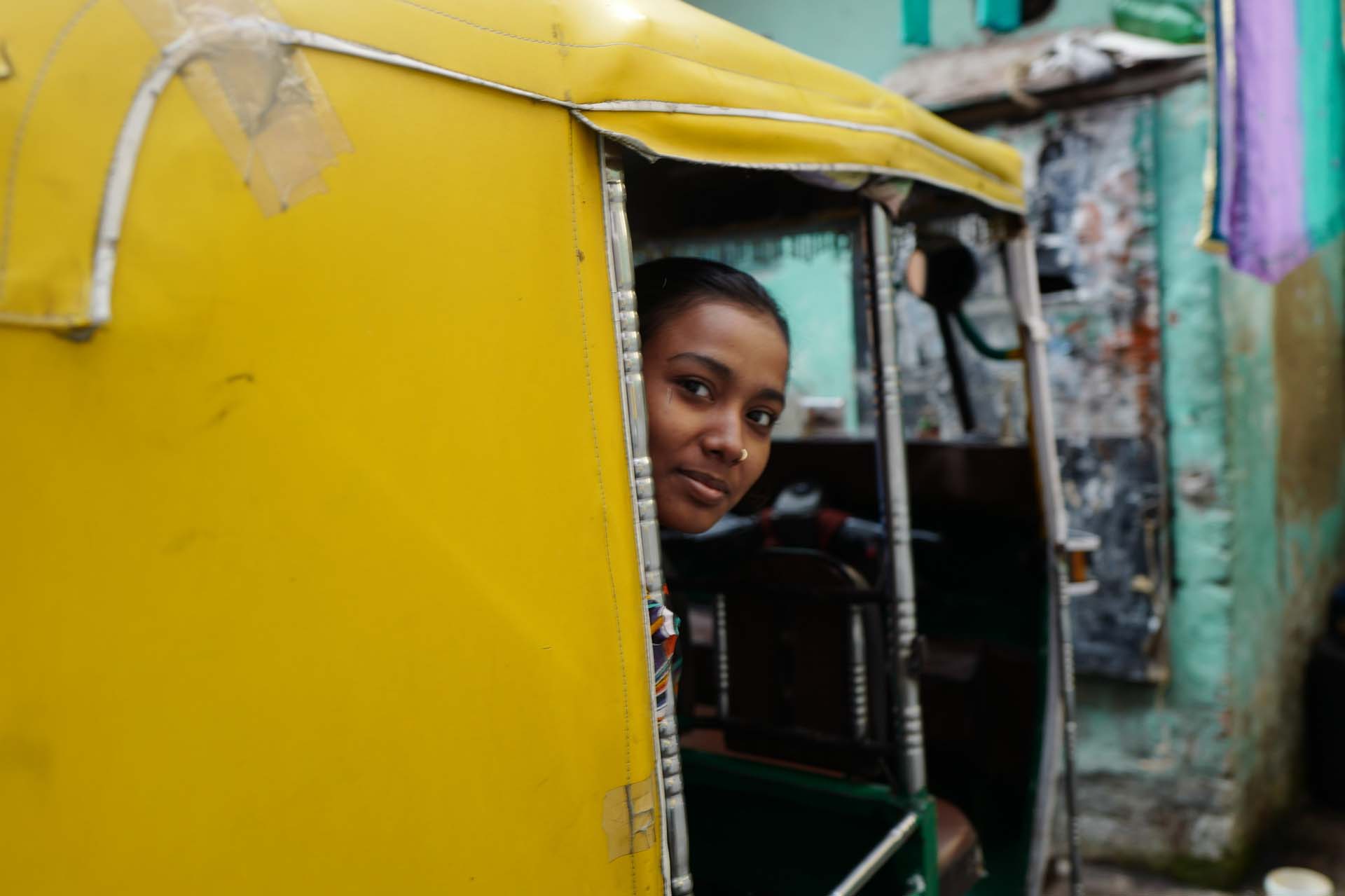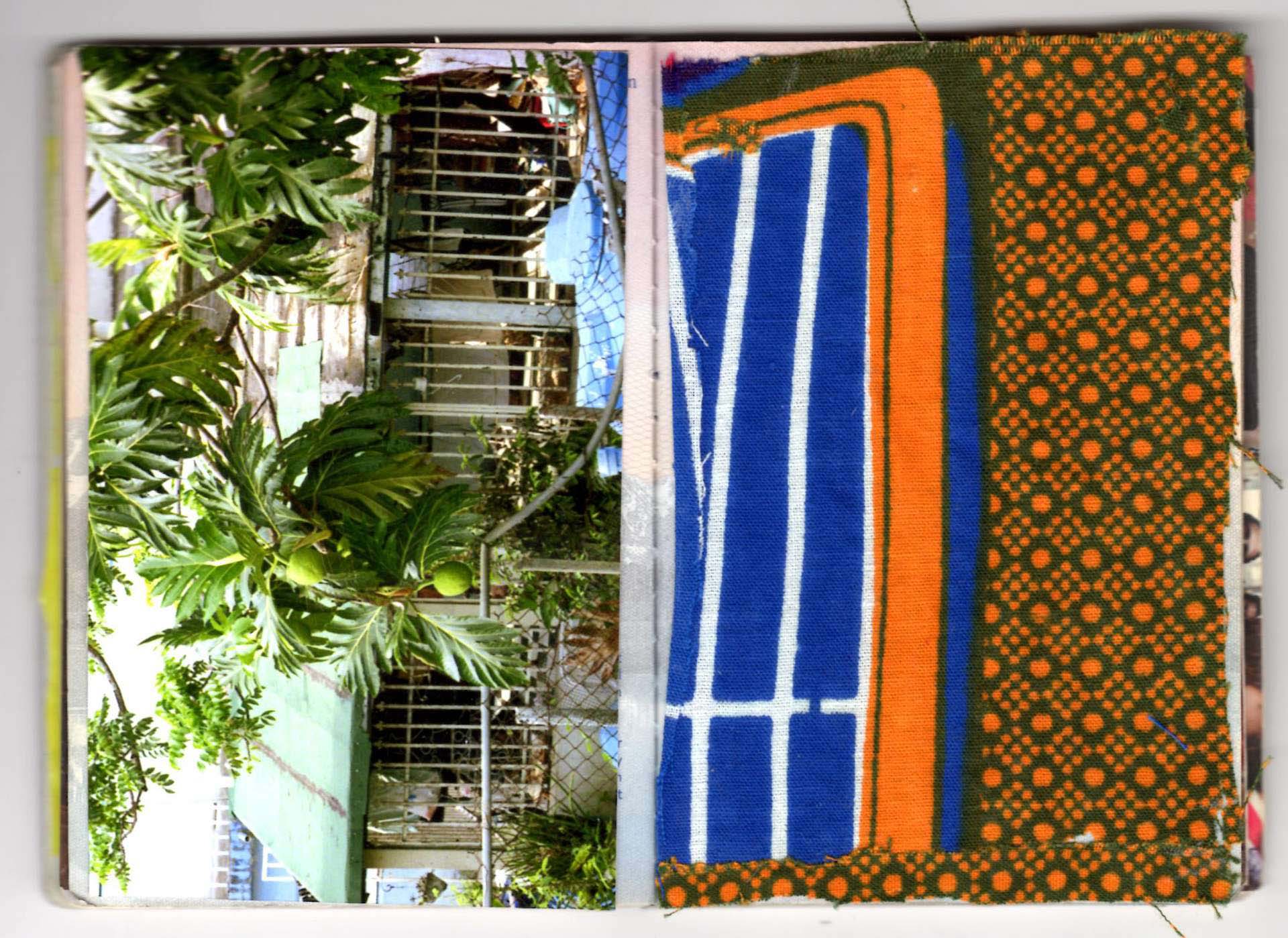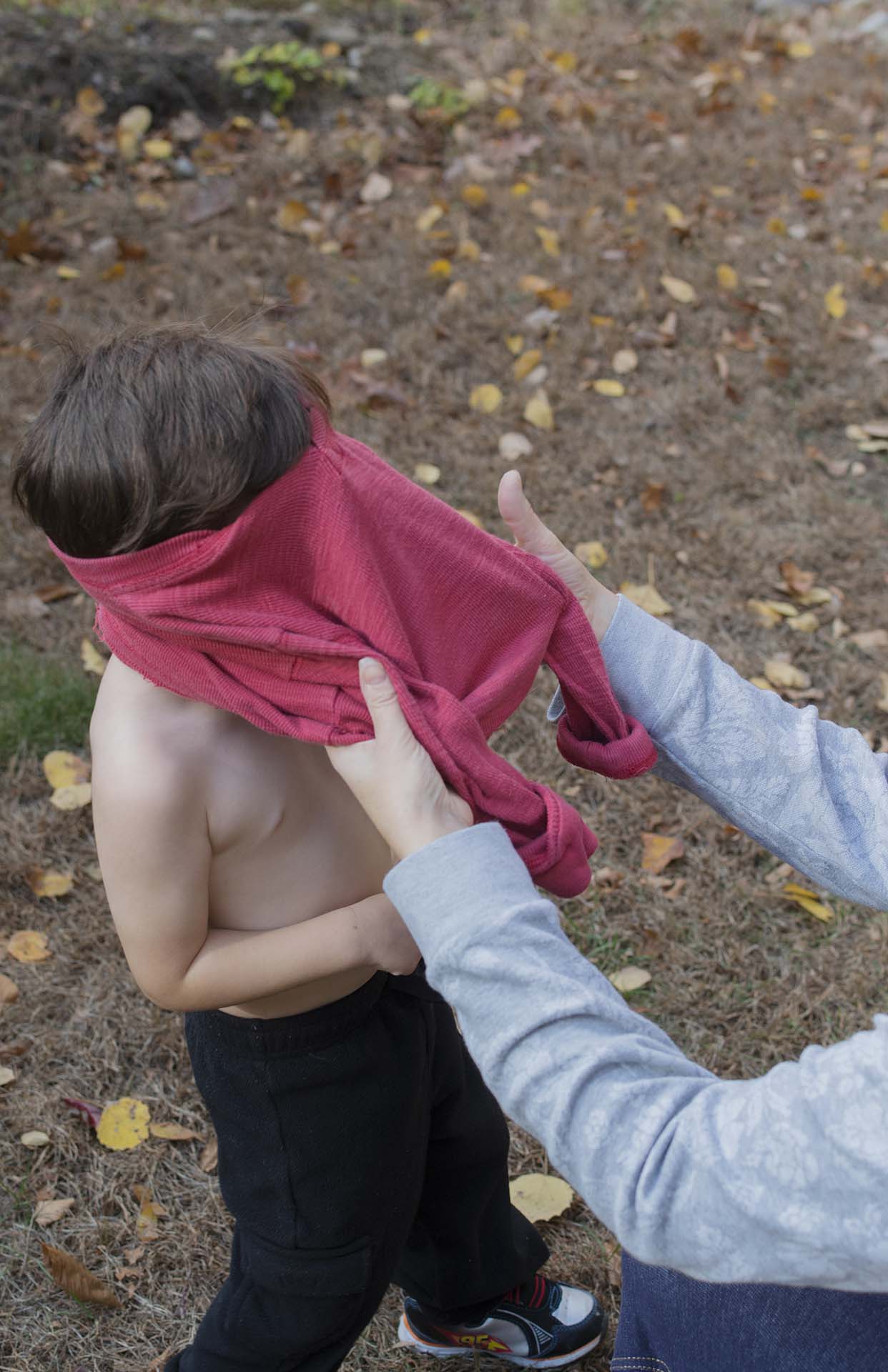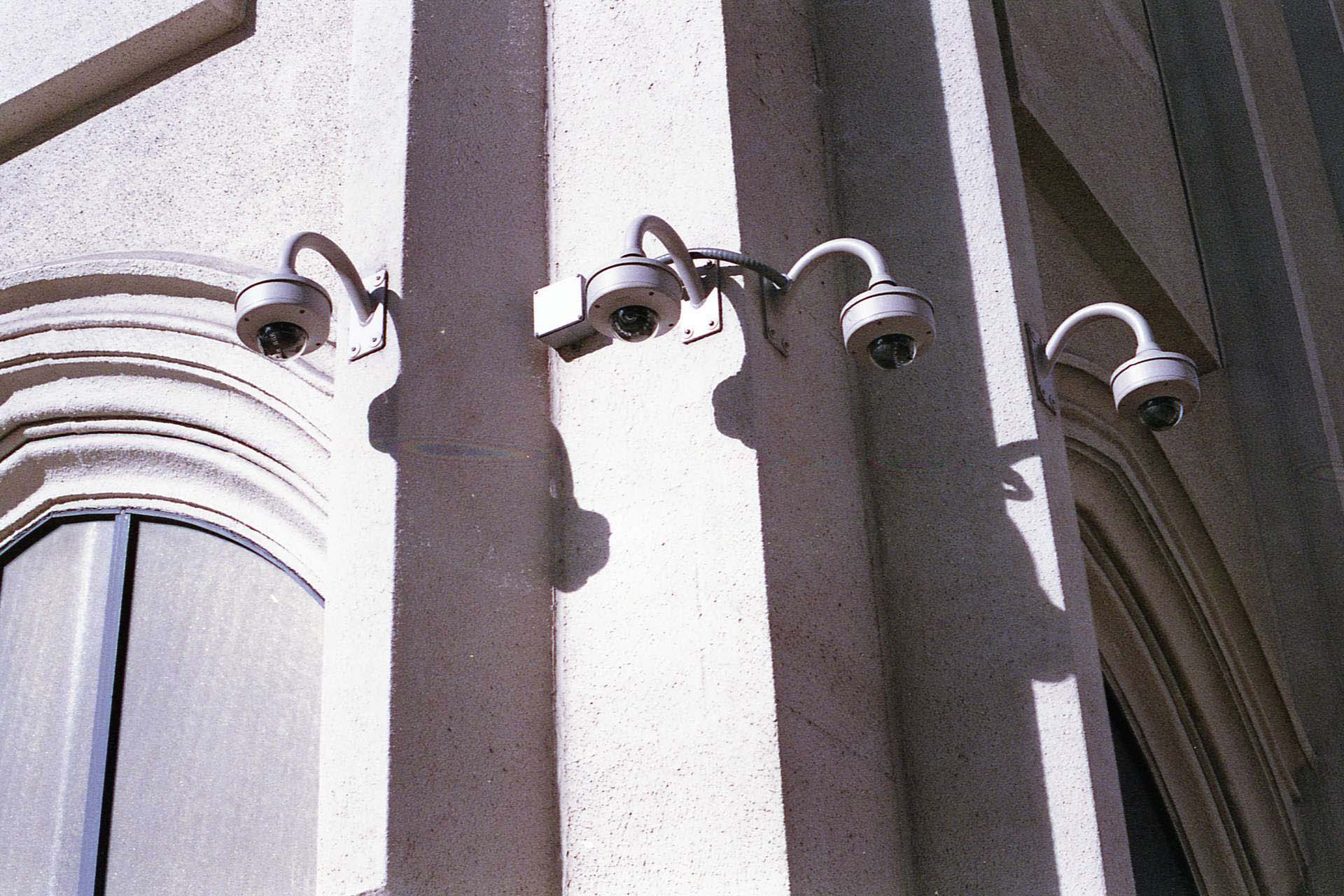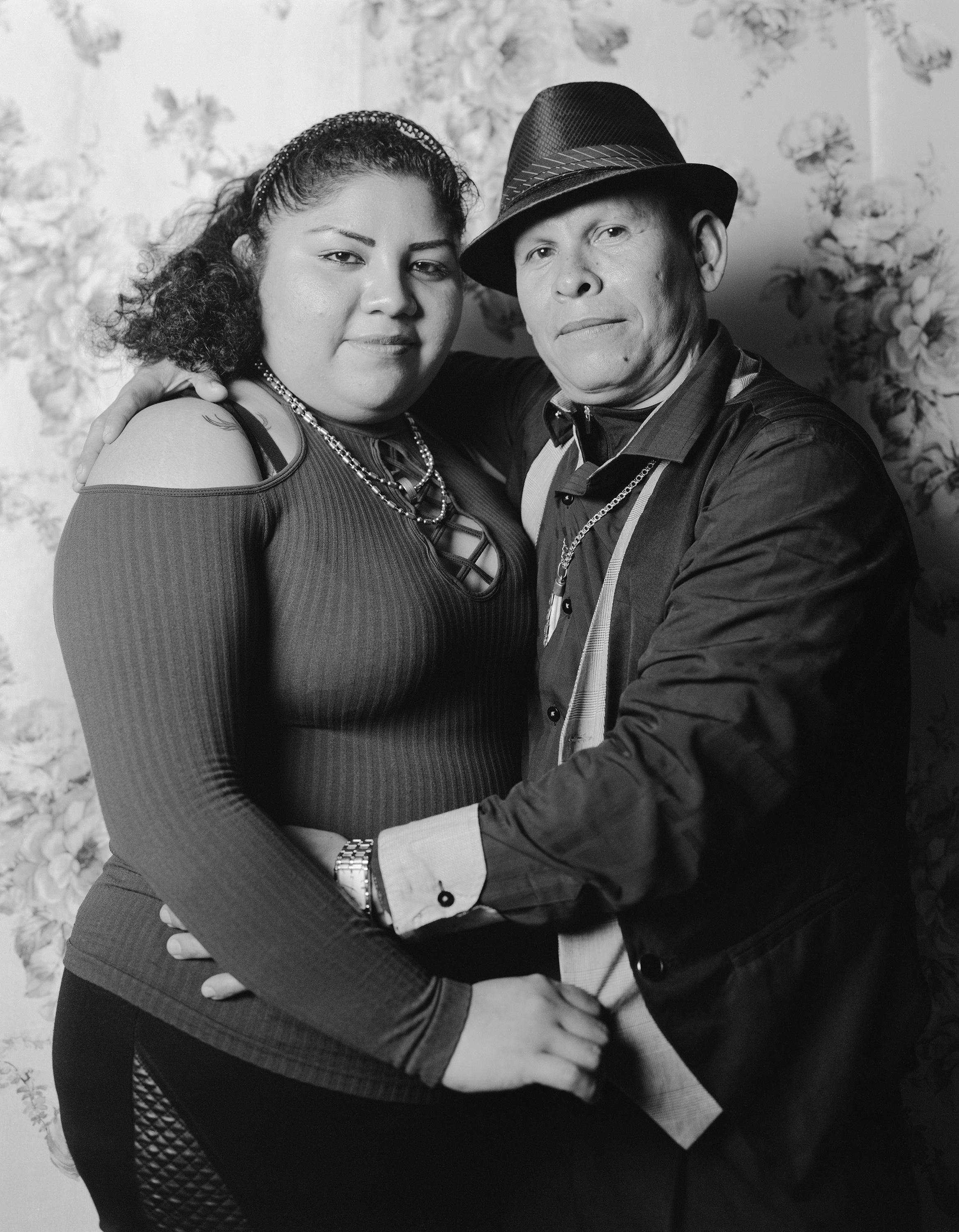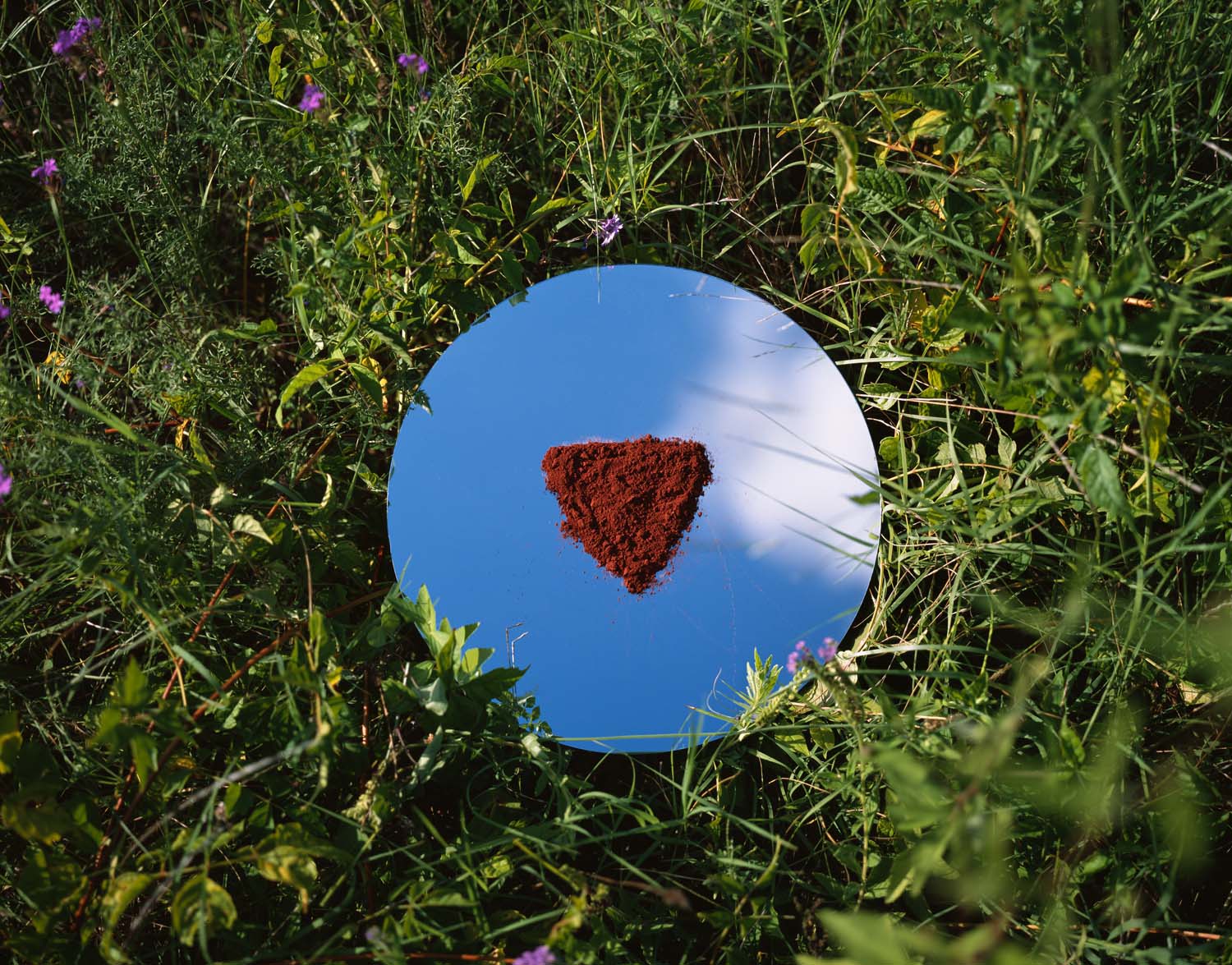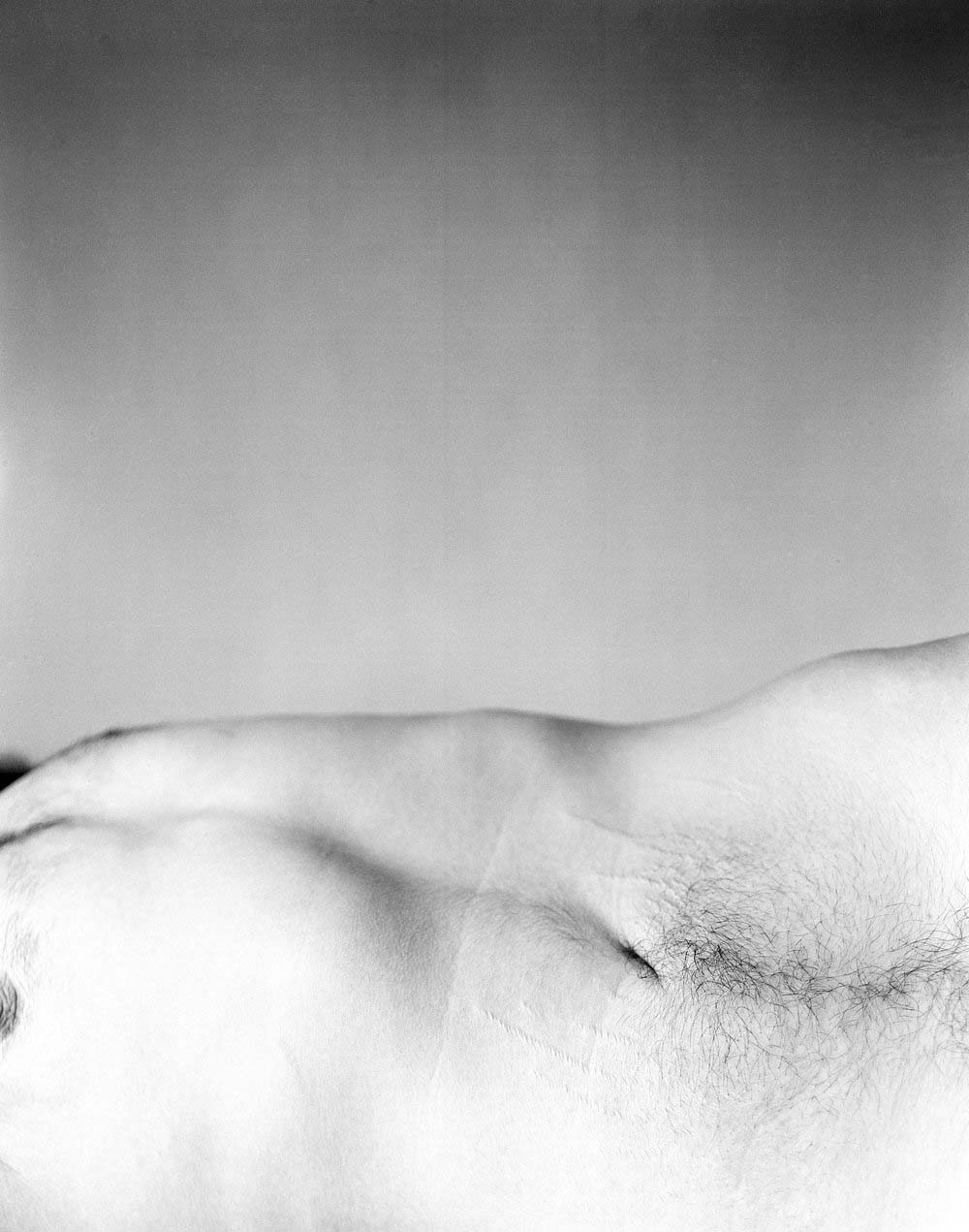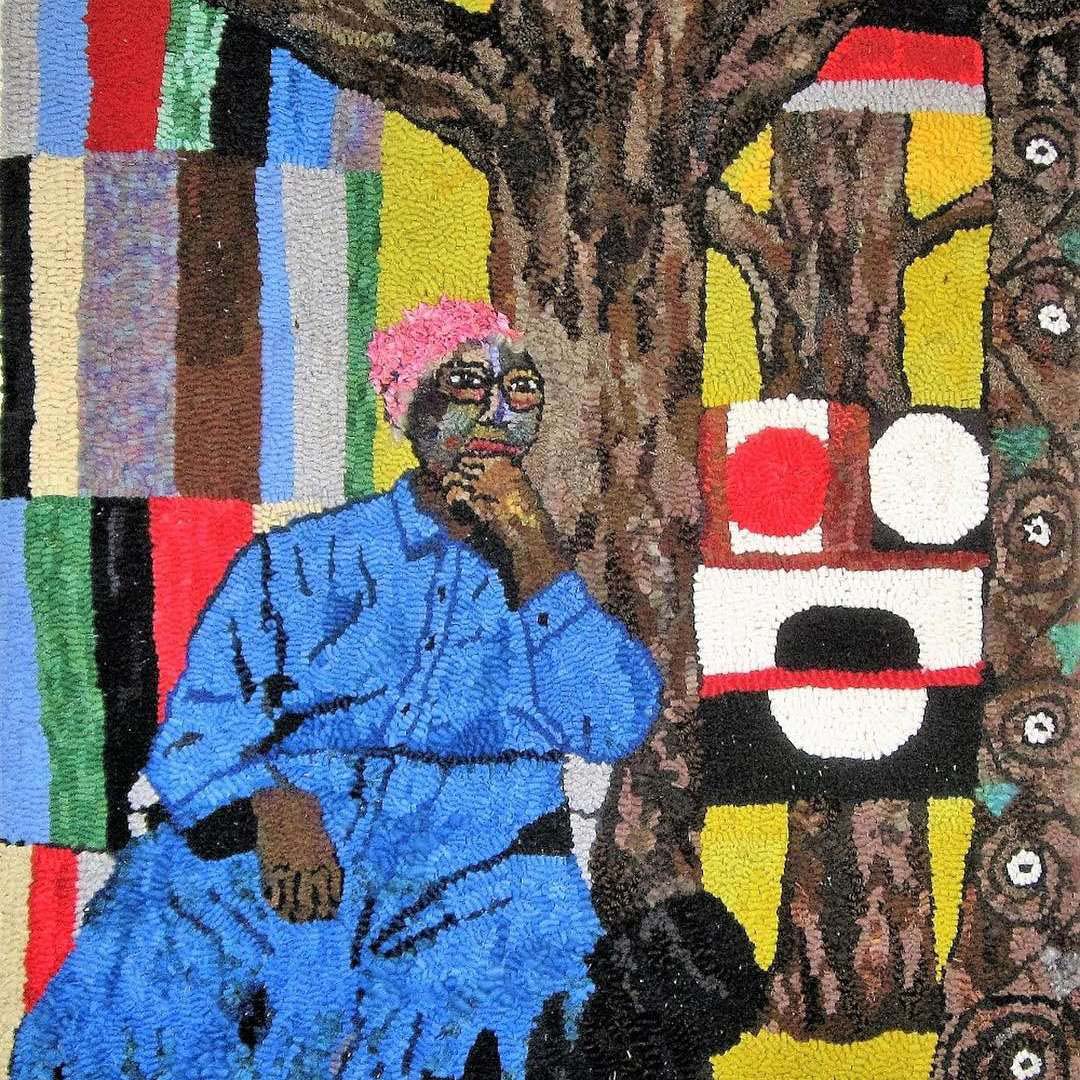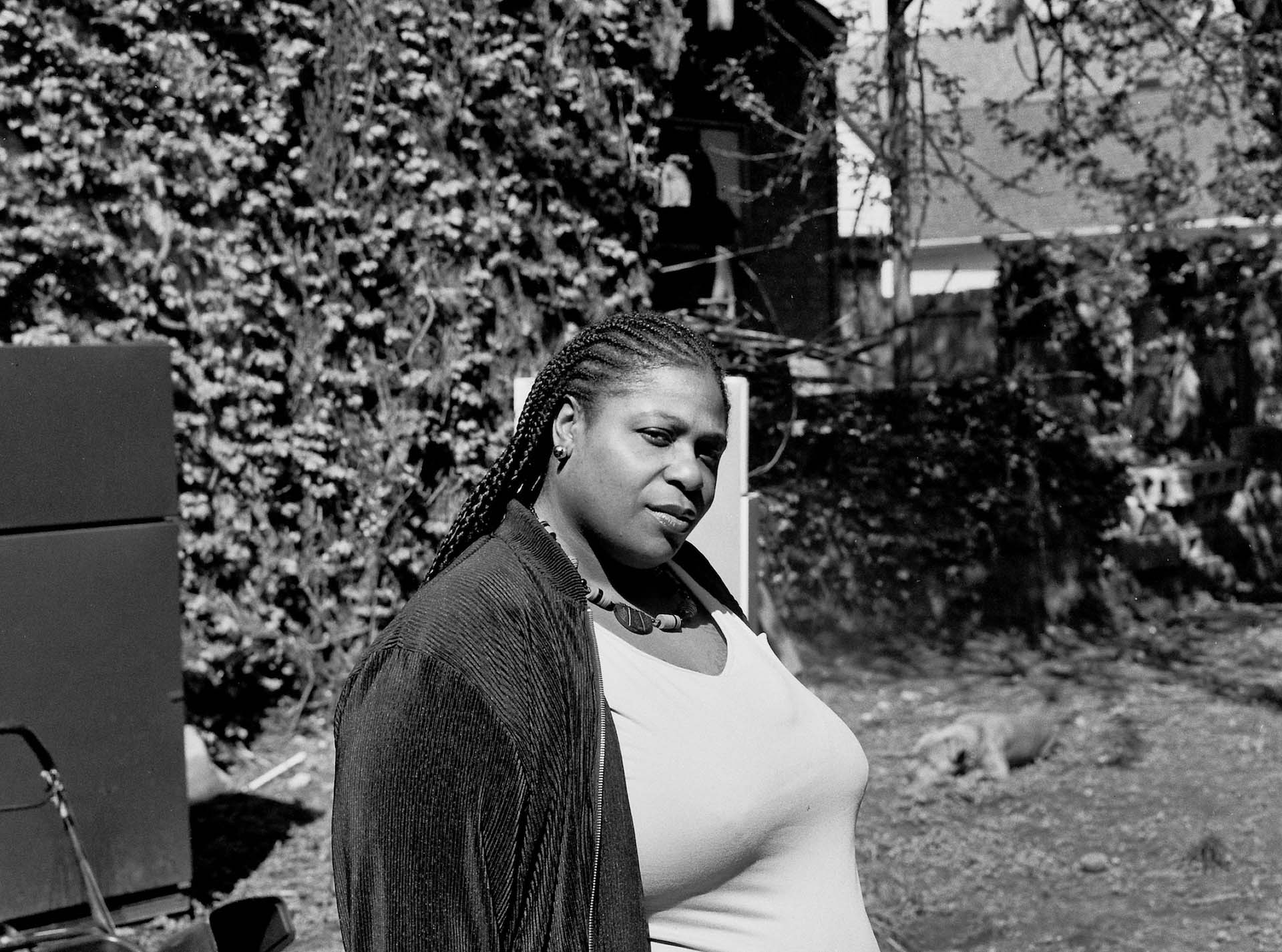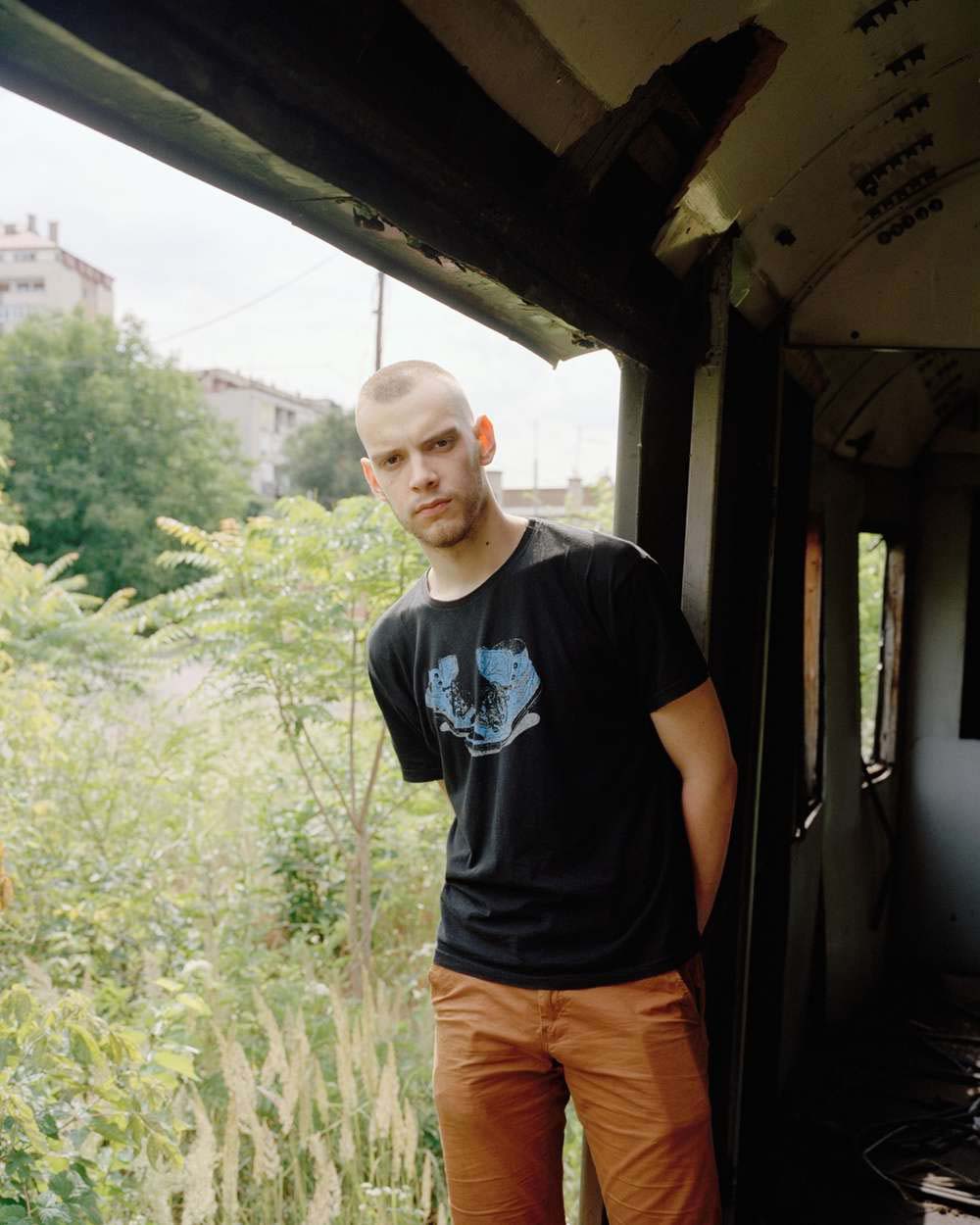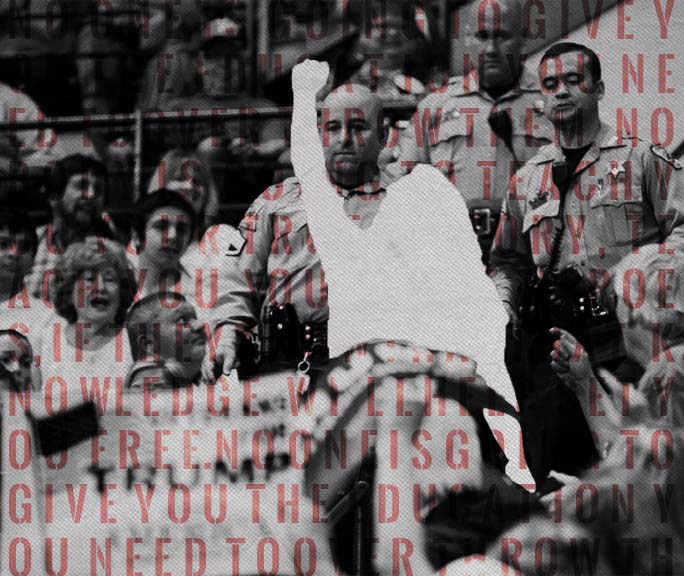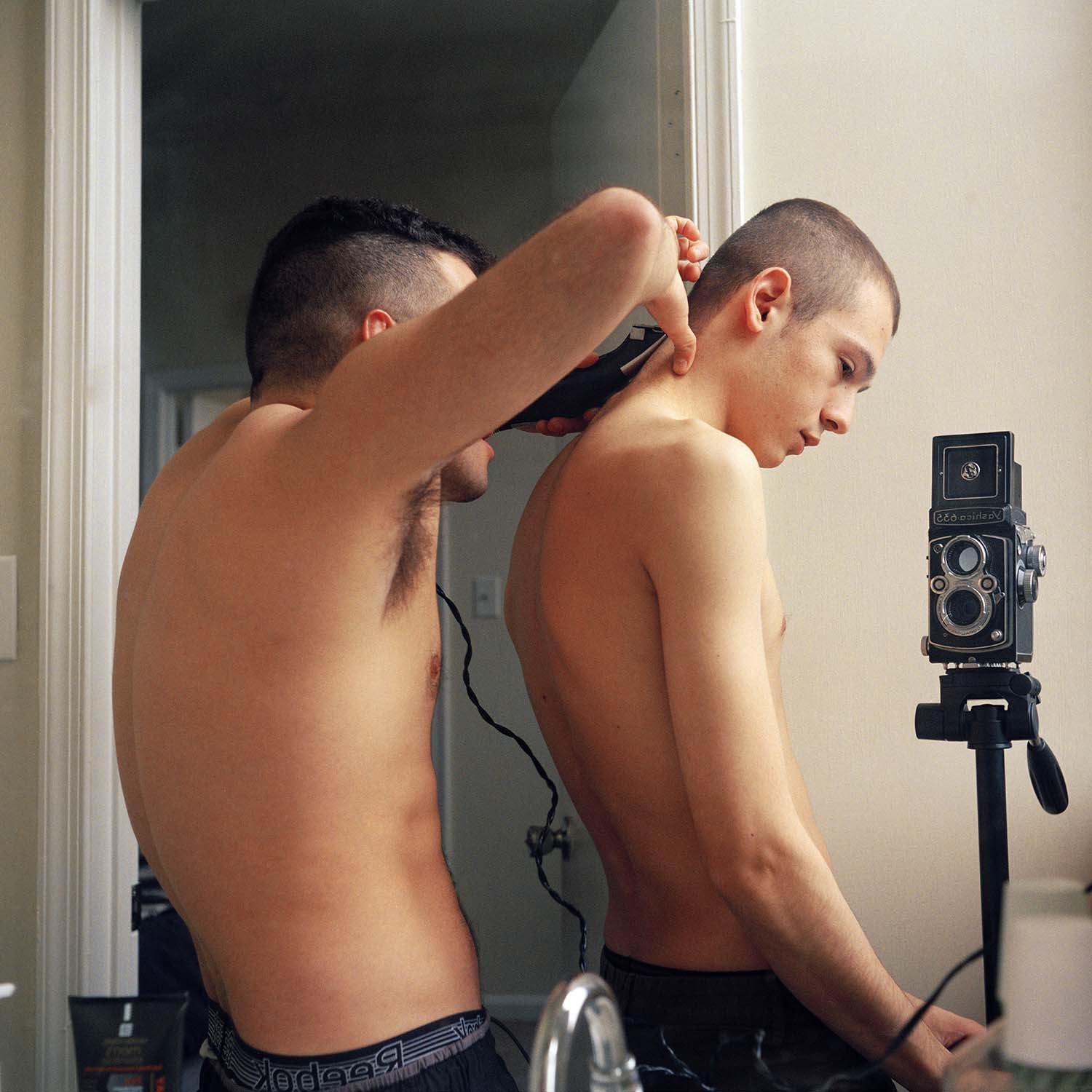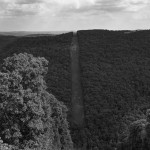Developer x For Freedoms
It Is A Miracle We Are Standing Here. The title of the exhibition currently hanging at the International Center for Photography speaks to the crisis of modern day social fabrics, art making, and political climate. When For Freedoms and I began discussing the creation of this show, and how we could use it as a platform to continue their mission of promoting work and artists creating evocative, politically, and personally motivated work, I immediately saw the connections between their mission and that of the Developer series here on Lenscratch.
For all of us, image making is our language, transcending borders and laws. Images carry with them a universal understanding that speaks to every heart and soul across this country. When selecting images and artists to be included in the exhibition at the ICP, we looked at who’s images carried that transcendent quality. We wanted to see who was bringing the common denominator of trying to understand the world around us through their specific vision.
It is a very humbling experience getting to see and understand the work of stories I can only begin to try and relate to, and I would encourage any reader of Lenscratch to spend time engaging with the over 100 entries on the For Freedoms platform. It Is A Miracle That We Are Standing Here is a visionary compilation of work by emerging artists who celebrate the resilience of their communities, subvert and complicate narrow notions of contemporary identity, and investigate the altered narratives and power systems that pervade their lives. Through a collaborative effort, we have created exhibitions both online and physically to spread a message that I hope will persevere beyond the walls of our photographic institutions. This is the world we have made and the world we must document and try to understand through our images.
Thank you for taking the time to engage with these images and these artists’ incredible stories.
Humbly,
Lenscratch & For Freedoms
Elisa Griselas
Artist Bio: Elisa Grisales is a NYC-based photographer. In January 2017, she graduated with an Associates Degree in Commercial Photography from LaGuardia Community College. Elisa’s photographic work unifies her interest in self-identifying either through her family, community, culture or her own identity. Using documentary styles, to depict continuous habits and generational family struggles help examine her fight to make her family, friends, community reflect more on their lives than their situation.
Artist Statement: “Since my Father’s deportation in 2007, I spent my youth wondering what life would be like if he was back in America. I spent my time figuring out how to connect us to feel like a family once again. 10 years later, as a woman, I finally had the money and courage to visit my Dad. In a search to reunite with my father and my roots came Como el Nuestro (Like Ours), an ongoing series of documentary images of my Colombian Dad and his Country. Displaying the fear that we might not physically see one another again. Not only focusing on our father-daughter relationship I rediscover my identity, culture, and roots roaming the streets of Colombia. “
Instagram Handle: @Grisales
Website: https://forfreedoms.org/artists/elisa-grisales/
Nadiya Nacorda
Artist Bio: Nadiya I. Nacorda was born in Detroit, MI to a Filipinx immigrant father and a Black South African mother. She later moved to Virginia, where she received her BFA in Photography & Film in 2014 from Virginia Commonwealth University in Richmond, VA. Nadiya is currently pursuing an MFA in Art Photography at Syracuse University’s School of Visual and Performing Arts where she is also a Teaching Assistant. Throughout the year, she travels to her respective home countries of South Africa and the Philippines to document her family and places of origin. Her work heavily draws from notions of identity, family, and generational trauma.
Artist Statement: In reaction to several traumatic events that took place during my upbringing, escapism was a common practice. As a young Black and Asian girl growing up in America, I constantly dove into a fluid ocean of daydreams and imagination. I would float off into my own world; a manifest dream to escape the difficult realities and emotions I did not have the words or maturity to describe. The many traumas, both generational and individual, I faced as a child, later influenced my work as I embraced abstract ideas and concepts, of which I was very inspired by the way the mind seeks to escape suffering through creating its own child-like fantastical reality, like daydreaming to pass the time. Often times consciousness toggles between the objective world and the individual’s subjective perception and interpretation. This series, The world is quiet here, serves as a romanticized rendition of the clashing of those two worlds: the one that is full of oppression and dehumanization, and the ethereal one that I would create in response. However limited our external reality remains, consciousness finds a way towards self-preservation while walking through a painfully cold and abusive world from which we have to escape, even if for a fleeting moment. It is like the acute moment of awakening when you are caught between your subconscious dream world and waking life, where you do not know if you are yet awake or still lost, floating off in a dream.
Instagram: nadiya_nacorda
Website: https://www.nadiyanacorda.com/
Emile Askey
Artist Bio: Emile Askey is a Brooklyn-based photographer born in Los Angeles, CA. Raised in Melbourne, Australia, he has roots in Austin, TX; Iberia Parish, LA; and Florina, Greece. He is interested in photographing the landscape as a way of meditating on one’s personal and family histories, and as a means for considering how current and historical social, economic, and environmental issues alter the way one traverses and sees the world in front of them. Emile is currently a collections photographer at the Princeton University Art Museum and teaches photography at Rutgers University, Columbia University, and CUNY Lehman College.
Artist Statement: Monuments Are Forever is a meditation on the American landscape. In my search for family, identity, and memory, as well as a document of the embedded beauty and violence of an ever-changing personal and national history. The project began in 2013 as a way to retrace my family road trips through the southern and southwestern United State, and the experience of traveling as an interracial family and has evolved as a way for me to understanding the intersections of past and present history. Divided into three “monuments,” its interrelated themes seek to deconstruct ideas of nation, culture, environment, and family.
Instagram Handle: @emileaskey
Website: http://www.emileaskey.com
Jose Alvarado
Artist Bio: New York native José A. Alvarado Jr. (b. 1989) is a Puerto Rican documentary photographer currently based in New York City. His personal work consists of documenting sub-cultures, politics, and the relationship between Puerto Rico and the US. His work has been featured in The New York Times Lens, VICE, The Intercept, Vanity Fair, Broadly, and he is a contributor to Reuters pictures. His current long-form photo project documents Alexandria Ocasio-Cortez as she navigates the road of her historic run for office. Spanning from her humble beginnings as a waitress, and her Primary election win, to becoming the nation’s youngest woman ever elected into Congress from her native district of NY-14, a district home to a population of over 75% people of color that had never elected a person of color to Congress before.
Artist Statement: “La Isla Del Encanto; Borikén,” documents the physical damage to areas in my family’s Puerto Rican villages, post-Hurricane Maria. These places hold the memories of my youth and areas of countryside I explored. In early December 2017, late February 2018, and late July 2018 I traveled to Puerto Rico to check in on my family, help with any repairs, and to see with my own eyes the way life has changed and has continued pushing forward. Over time I’ve developed a ritual of revisiting the areas and paths that are significant to me. The frames taken are remnants of memories, that are etched in my mind, that have physically disappeared on the island and moments shared in the company of loved ones that the storm could not destroy. With the photographic medium as a tool, I’ve helped myself put to rest these physical landmarks my family made on the island. I’ve chosen to compose the scenes of destruction in angles most vividly remembered by myself. By capturing the identity of quiet landscapes, toppled homes, crippled forests, and plowed towns, that have seen its unique identity physically stripped away, is my way of coping. My memories on the island and stories I would hear about the way life was on the island will always stay with me, but my ability to retrace the paths I’d explored are forever lost, leaving me with frames of my heritage the storm could never take away.
Instagram Handle: @josealvarado
Website: http://www.josealvaradophoto.com/
John William Murphy
Artist Bio: John Murphy (b. 1997) is an artist who lives and works in Long Island, New York. His work explores issues of identity politics, community and self through photographic exploration of marginalized narratives. Reacting with his camera is a way for him to explore and express issues in relation to the way in which he makes contact with the world. He will be completing his Bachelors in Fine Arts in Photography from SUNY New Paltz in end of Spring 2019.
Artist Statement: Too often, queer individuals mature without being educated on or introduced to their community. Recently, I came across a manifesto distributed anonymously during New York City Pride in 1990, which described queerness as a political movement. It served as a tool to inspire, congregate, and uplift my community and forms the foundation for this body of work. It began with my own desire to understand queerness, and to create the images that I wish I had seen in circulation as a child. I carve out a physical space through my photographic frame for queerness to exist unapologetically. By subverting the rigid and normative gaze my community is often exposed to, my subjects allow me to navigate the infinite possibility that is Queer.
Instagram Handle: @johnn.williamm
Website: https://forfreedoms.org/galleries/it-is-a-miracle-that-you-are-standing-here/
Guanyu Xu
Artist Bio: 徐冠宇 GUANYU XU (b.1993 Beijing) is an artist currently based in Chicago. He was the recipient of the Fred Endsley Memorial Fellowship and the James Weinstein Memorial Fellowship.
His works have been exhibited internationally including the Aperture Foundation, New York; the Center for Fine Art Photography, Fort Collins; New York Photo Festival, New York; The Union League Club of Chicago, Chicago; Mint Museum, Charlotte; Orange County Center for Contemporary Art, Santa Ana; Embassy Tea Gallery, London, and others. His works have been featured in numerous publications including Aint-Bad Magazine, Musée Magazine, Der Greif, and China Photographic Publishing House.
Artist Statement: “Influenced by the production of ideology in American visual culture and a conservative familial upbringing in China, my practice extends from examining the production of power in photography to the question of personal freedom and its relationship to political regimes. I negotiate this from my perspective as a Chinese gay man. In my work, I migrate between mediums like photography, new media, and installation. These movements operate similarly to my displaced and fractured identity. I was born and raised in a conservative family in Beijing, China, where expressions of overt non-heteronormative behavior were forbidden. My father is a military officer and my mother is a civil servant. Both of them still do not know I’m gay. Growing up in China with limited representation of LGBTQ people, I turned my attention to Western films and fashion that were dominated by representations of white masculine men. As a teenager, my exposure to American culture through films and TV shows planted an American Dream within me. However, the intersectional experience of race, sexuality, and citizenship in the U.S. these past years change my perception entirely.
In ” Temporarily Censored Home”, I secretly situated photographs in my teenage home in Beijing to ‘queer’ the normativity of my parents’ heterosexual space. These images taken in the past four years consist of portraits of me and other gay men in their domestic settings from my project “One Land To Another”; stills of the 3D animation I constructed; photographs of landscape and built environment taken in the United States, Europe, and China; torn pages from film and fashion magazines that I collected as a teenager; images from my family photo albums. Through positioning and layering images, I aim to juxtapose, contradict, and collapse space and time, disrupting my teenage home. Even though these installations were not permanent, I reclaimed my home in Beijing as a queer space of freedom and temporary protest.
Instagram Handle: @xuguanyu
Website: https://www.xuguanyu.com
Buku Sarkar
Artist Bio: Buku Sarkar is a writer and photographer who has grown up between Calcutta and New York. Her stories have appeared in N+1, Threepenny Review, Apt, Huffington Post and elsewhere. Her photographs have been featured in the New York Times Lens Blog, Huffington Post, Documentum, and various other journals. She is working on a collection of short stories about Indians in New York and a project with the residents of the largest Muslim slum in Calcutta.
Artist Statement: “One Saturday morning, I happened upon a group of ladies, in the slum, doing their washing. I asked if I could photograph them. They agreed. A few days later, I returned, to give them prints. They were thrilled and invited me into their homes to take more photographs- photographs of their children, visiting siblings, cousins, friends; photographs of them cooking and playing and getting ready for New Year’s Eve. I took back more prints. They requested more shoots. And so it went on. I visit them almost every week. I call them my Saturday Morning Laundry Ladies. Soon, the adjoining houses began to ask for photographs, then the local tea shop owner and the butcher and the lady who lived in a shack next to the tea shop I frequently visited.
I don’t photograph people of a slum to document poverty. I wasn’t photographing them with a project in mind. There was no ulterior motive for me. I was doing it because I was interested in them. The slum dwellers just took me in at a time when I was very unwell and trying to survive one day at a time. Taking photographs helped that battle. So I kept returning. I’d make them prints because taking their pictures made me happy and I wanted to try and give back some of that happiness. That’s how over the years I became their Photowalli Didi. (the sister with the photos). Our relationship is unequal, we come from different worlds but we both give and take something from each other. This is an exploration of them through my eyes, the slum, a poor area I was forbidden to go near as a child and our strange intimate relationship. Perhaps most importantly this is a project about belonging, about breaking barriers and that of challenging stereotypes and myths”
Instagram Handle: @bukusarkar
Website: http://www.bukusarkar.com
Jorly Flores
Artist Bio: Born and Raised in San Juan, Puerto Rico, Jorly Flores is a recent graduate from the School of Visual arts with her BFA in Photography and Video. Based in New York, as an artist, Flores creates images that speak to the collective about the social issues specifically within the Latinx Community but also focusing on the Puerto Rican identity. Her personal work explores the abstract bubble of U.S. citizenship, the drive for equality, denial of blackness, and the imposed ambiguity of identity which creates tension in all facets of life. Flores’ interdisciplinary practice strives to build a sense of perspective, few, have the privilege to experience.
Artist Statement: ” I am of Puerto Rico, the genesis of me begins with her. From the roots of San Juan, I began my love of this land with the people. Neither of them could exist without the other, and through my lens, I seek to personify the spirit she evokes through her children. While pursuing my BFA in New York, my energy shifted from student to teacher. To educate peers and professors with a frame of reference I’ve experienced since my body’s birth: being born an American, but being treated as a second class citizen. In my last year of University, Hurricane Maria created a distance & fear I’d never known. I couldn’t reach the island or my family for weeks, so the distance grew further and the fear greater. I created this work to be in two places at once- so those who don’t have the frame of reference the children of Puerto Rico look through, before, during and after the hurricane. La resiliencia de mi comunidad es lo que me mantiene viva y mantiene mi creatividad como artista.“
Instagram Handle: @jorlyfloress
Website: http://jorlyflores.com/
Ally Caple
Artist Bio: Ally Caple (b. 1995, Connecticut, United States) is a queer biracial photographer working and living in Brooklyn, New York. Through her photographic work titled The Body Unlearning Its Weight, Caple links the exploration of her identity to the act of nannying as labor. In March of 2018, she gave a keynote presentation at the SPE National Conference in Philadelphia with photographers Giancarlo Montes Santangelo, Cristina Velásquez, and Stanley Wolukau-Wanambwa. The lecture, titled On the Perils and Possibilities of Being Diverse: a Conversation, discussed her artistic practice and experience as a minority within art education. A graduate of SUNY Purchase College, Caple received a BFA in Photography and a BA in Arts Management in May 2017.
Artist Statement: “My interest in portraiture began when I started photographing my younger cousins. I spent most of my time looking after them and this line of work eventually turned into working for families of no relation. When I moved to Westchester, New York for college, I began working for a family there. They became a large influence and subject of this work, which started as my senior thesis. My little brother, who is 18 years younger and half Ecuadorian, is seen in the work; I think a lot about our similarities and differences in upbringing. The Connecticut town Mom has lived in her entire life differs from the lifestyles of Westchester, and both locations differ from where my dad lives. While most of my subjects are people, the work is also so much about place. What started as an interest in gesture and portraiture became a way for me to explore my own identity and what it means in relation to nannying as labor. The images read in multiple sequences, bringing ideas of race, class, gender, and politics to light depending on how it’s viewed. Since the work began in late 2016, it was initially viewed under the context of the 2016 Presidential Election. This was an important factor in the beginning although I think it’s grown less important over time. Joel Meyerowitz, Eva Vermandel, Ka-Man Tse, and Joanna Piotrowska were heavy influences before and during the making of these photographs. My introduction to the work of Elle Pérez and Deana Lawson came soon after. My creative process involves looking, studying, and talking about the work of others in order to better understand my own images, ideas, and purpose.“
Instagram Handle: @allycaple
Website: http://www.allycaple.net
Terrance Purdy
Artist Bio: Terrance Purdy Jr. is an artist from Chicago, IL. He holds a B.A. in Interdisciplinary Studies from the University of Missouri and is currently getting his MFA in photography, video, & related media at the School of Visual Arts in New York City. Other than art-making, he loves dj-ing, baking, and reading manga.
Artist Statement: AD LUCÊM.
I am interested in the ways that identity is shaped in the black community; specifically, how our identity intersects with the themes regarding religion, sports, material culture, and violence. We fully embrace these things in aspects of our life, but we also reject and reconstruct them in a way that gives us agency as well. African Americans are in a unique circumstance of constantly constructing a culture and identity, one that is always being appropriated while simultaneously being demonized. There is power in that process.
Instagram Handle: @Roninknows
Website: http://roninknows.com
Jerrod White
Artist Bio: “Jerrod White (b. 1994) is a Brooklyn-based photographer and visual artist, originally from Long Island, New York. In 2017, he graduated from Stony Brook University with a major in Psychology, minoring in Sociology, with elective studies focusing on the relationship between visual art, technology, and politics. Jerrod’s photographic work is focused on creating images which merge interests in constructivist, surrealist, and photojournalistic photography. His still photography and mixed-media collage work act as personal documentation as well as commentary on themes such as intimate relationships, isolation, and living in a world overcome by technology.
Artist Statement: My gallery Indirect plays into the idea of intimacy with those you might not have right in front of you. Being indirect in an intimate relationship leaves room to question and for personal anxieties to infect the everyday thoughts about your partner, family member, or friend. Being indirectly close to another person has been a recurrent theme in my life, and this series acts in part as a personal reflection, but also as a commentary on the nature of interpersonal relationships. I’ve since come to terms with the unhealthy decisions and attitudes of paranoia, mistrust, and anxiety I have perpetuated in my intimate relationships. I have come to terms with a deeply abusive relationship, which in part inspired these photos.
I photograph my loved ones in an attempt to use my past as a tool to build an unspoken dialogue between them and me.
In creating images which do not exist in the current moment and live in their own world, a comparison is drawn between intimate relationships and their ability to suspend us in space and time. Intimacy enables us to step outside of reality with another person into the realm of ambiguity.
Instagram Handle: @jerrodinho
Website: http://jerrodinho.bigcartel.com
Daniel Ramos
Artist Bio: “Daniel Ramos graduated from Columbia College Chicago with a BA in Photography in 2003, and studied for an MFA at California College of the Arts in 2007. Most recently, he won the 2018 Dorothea Lange-Paul Taylor Prize, and he will have his first solo show for his series, The Land of Illustrious Men, at Filter Space in Chicago, Illinois in 2019. The series was featured in NY Times Lens and PDN Edu. The photographs Daniel creates are a direct response to his life experience. He has always had a cultural relationship with both the landscapes and the people he has photographed. Daniel primarily works with large or medium format cameras and analog film. Daniel wants his work to resonate in people’s minds and hearts, and to change their perceptions and feelings about subject matter they might have thought differently about before. His main objective is for the viewer to be reminded of the meaning of humanity. Daniel has decided that all of his photographs will be made with love because he believes that art helps the world to be a better place.”
Artist Statement: At this particular moment in history every human being south of the American border is under suspicion. The wall is supposed to protect the American people from the bad hombre, the violators of peace. The photographs I am submitting are of men and women who have nothing but their lives to keep them going. They are what many imagine a bad hombre looks like. Their image is what people might easily fear. I want to eradicate those stereotypes from people’s minds. I want to free the Latin man and the Latin woman from those negative connotations.
Instagram Handle: @danielramosphoto
Website: https://danielramosphoto.com
Ashley Kauschinger
Artist Bio: Ashley Kauschinger is a photographer and book artist that explores female identity and women’s voices. She received her BFA from Savannah College of Art and Design and her MFA from Texas Woman’s University. Her photographs have been exhibited nationally and internationally in venues such as the Light Factory and the Chiang Mai Art Museum. She has been published in Chinese Photography Magazine, PDN Photo Annual, and Lenscratch, among others. Her work is in the collections of Vanderbilt University and the Sir Elton John Collection. Ashley is also the Founding Editor of Light Leaked, an online photography magazine that creates dialogue and community. Ashley lives in Columbia, SC where she teaches at the University of South Carolina.
Artist Statement: Cycles: A History of Women investigates women’s history and illuminates parallels to contemporary women’s lives. The series is divided into chapters of exploration: the history of events, female figures, violence against women, and the evolution of patriarchal systems. Each chapter uses a combination of color, light, symbolic constructions, still lives, appropriated imagery, performative shadows, and projections to communicate their underlying history and intention.
Instagram Handle: @ashleykauschinger
Website: http://www.ashleykauschinger.com/
Ariana Falzarano
Artist Bio: ” Ariana Falzarano earned a BFA in May 2018 from SUNY Purchase School of Art + Design with a concentration in Fine Art Photography. The artist was born in 1996, grew up in Nassau County, Long Island and preferred pronouns are she/her. Ariana is currently working and producing in the New York Tri-State Area. Although educated in photography, her aspirations include curation and editorial work, as a vehicle to engage with questions occurring outside her own practice. Falzarano’s photographic procedures contemplated the medium of photography itself. Through visible iteration,s her pursuit attempts to push unseen boundaries the instrument can awaken on both an intellectual level as well as artistic. By providing reproduced archival work through reiterations of other photographic processes, she aspires to contribute to the discourse that reaches beyond the artistic realm.”
Artist Statement: “A theme surrounding my work is an attempt to direct the conversation about the relationships that happen through tensions and reconceptualization when images are grouped together. Researching alternative modes to create images has exposed me to unfamiliar techniques such as double exposure and repurposing images through the archival process. An image is not an objective depiction of reality. Unlike paintings, the hand of the photographer is not palpable on the surface of the photograph even so it is present through all the decisions that inform the making of the image. Eliminating facial recognition in the portraits made was a thematic choice, in order to eliminate the animistic nature humans cannot control. By doing this I hope to open a dialogue that is focused on the order and grouping of images rather than the “personhood” one may be drawn to in one picture. Rather than using images for a set narration, I attempt to use them as tools to discuss a larger conversation, one surrounding the characteristics the “tool” of the photograph takes. This conversation is propelled by photographs as evidence, documentation, files etc. Since most of the population has this tool in the palm of their hands, what does this mean for people like myself who have gained a degree in photography? What does it mean about truth and fiction? Are we the new reporters of does the ability to select and curate what is being seen strip us of truth tellers? My photographic practice is a result of my internal grapple and with these never-ending questions.
Instagram Handle: @ariana_falz
Website: https://www.arianafalzarano.com/
Mary Tooley Parker
Artist Bio: After a career in dance, and then in art production at Vanity Fair and GQ magazines, Mary Tooley Parker left New York City for a more rural environment. She then began pursuing an interest in textiles of different forms, eventually leading her to the one indigenous American folk art of hooking “rugs.” Her textile compositions have been exhibited in museums and galleries. She is a trustee on the Board of the Westchester County Historical Society and the Katonah Museum Artists Association, and a member of the National Association of Women Artists, the Silvermine Guild of Artists, and Viridian Artists Gallery in Chelsea. She was awarded a Fellowship by the New York Foundation for the Arts in 2015.
Artist Statement: I am a textile maker using various fibers as paint. My artwork focuses on realistic interpretations of people and nature and incorporates a variety of materials including wool, cotton, silk, fleece, yarn, bicycle streamers, denim, and metallic fibers. I also use natural and synthetic dyes to create colors as needed. Textile art is received by the viewer in a different way than fine art, and there is science showing that a different part of the brain is stimulated when viewing a textile. It appeals to the senses, especially touch, and gives a feeling of warmth and familiarity before the brain even registers the visual image. Working in the simple medium of rug hooking affords me a strong connection not only to the fibers running through my fingertips but also to the women who used this and other fiber mediums to express themselves during more difficult times. I seek to elevate this traditional medium from the floor to the wall to be viewed as art.
Instagram Handle: @m.tooley.parker
Website: https://www.marytooleyparker.com
Shooting Without Bullets
Artist Bio: Shooting Without Bullets is a for-impact organization utilizing an Art as Activism model to amplify the artistic voices of black and brown youth. The organization provides a framework for teen and young adult artists in Cleveland to process the complex social justice issues affecting their communities and share their perspectives through art. Shooting Without Bullets houses a collective of artists, ages 18–21, whose interests and talents span the disciplines of photography, music, performance, design and more. The organization also provides art and social justice related programming to youth ages 13–17. Since its inception in 2016, the artists of Shooting Without Bullets have filled gallery walls with their images and performed on stages throughout Cleveland.
Artist Statement: “Open a magazine, read a newspaper, look at a billboard, and you will see powerfully composed and constructed photographic images of black teens. Some are positive, some negative, but very few are representative. In cities across the country, images of teen culture are being reexamined, commodified, and reinterpreted in an artistic and social context, providing a provocative overview of issues that affect not only young people’s lives but those of others, as well.”
– Deborah Willis, Reflections in Black
We are the UNDEREXPOSED. Ours is the culture that is exploited, commodified and appropriated by the mainstream without giving us, the creators, recognition. Media tells stories of our lives and communities without granting us autonomy over our narratives. We are Shooting Without Bullets, an artist collective of black and brown teens in Cleveland, Ohio. Through our art, we reclaim the narrative of our lives, our culture, our communities.UNDEREXPOSED represents the reality of our daily lives in ways that are authentic and uncensored. This is Cleveland. It is not the tourist attraction version of the city that graces the covers of magazines and newspapers; it is the real Cleveland that we encounter as we traverse our neighborhoods. In a city plagued by racism, disparity, and discrimination, the humanity, perspectives, and art of black and brown youth are overlooked and UNDEREXPOSED. These black and white images bring our views into the conversation. These streets are our world. Concrete, brick, and metal are the elements that make up our surroundings. A hoop without a net, a chain link fence, a stoop, worn paint, and weathered wood are the markers of our side of town. The film grain pays homage to the grit of our city and its people. The subjects project an unfiltered spirit of resistance. They reclaim their right to exist, an act that is imperative in a city and culture which seeks to erase us. These photographs are evidence of our existence, of our experiences. We will not be erased.”
Instagram Handle: @shootingwithoutbullets
Website: http://www.shootingwithoutbullets.org
Amanda D. King
Artist Bio: Amanda King (b. 1989) is a conceptual artist and activist whose photo work explores themes of race, gender, socioeconomics, trauma, family, and community. Through the lens of her camera, she tells stories of disadvantaged communities and the societal forces that oppress them. In addition to creating art, Amanda has dedicated her career to advocating for adolescents and underrepresented communities and is the Founder and Creative Director of Shooting Without Bullets. Amanda received her B.A. in Art History from Bryn Mawr College (2011) and a J.D. from Case Western Reserve University School of Law (2017), where she focused on Race and Law, Constitutional Law, Juvenile Law, and the Philosophy of Law. She has been recognized by the Case Western Reserve University School of Law for using her public platform and creative talents to advocate for juvenile justice and police accountability.
Artist Statement: During my grandmother’s funeral, I touched her stiff, worn hands camouflaged by white satin gloves and remembered how fearless she was in her quest for freedom but how little autonomy she actually experienced in her lifetime as a result of systemic racism, sexism, and poverty. As a former sharecropper, she lived on the margins of freedom and enslavement. She lived under the control of Jim Crow, tilled the soil of plantation lands for less than a living wage and died in Trump’s America. After my grandmother’s passing, I created All The Chains Holdin’ Me—black and white portraits of individuals on the margins of the government’s protection. Like my grandmother, these subjects represent a people that are free from fear but not from the threat or impact of state-sanctioned violence. In Oasis, Ms. Rice stands outside of the Tamir Rice Afrocentric Cultural Center, the youth art space she is building in memory of her son Tamir, who was killed by Cleveland Police at age 12. All The Chains Holdin’ Me shines a spotlight on the dissonance between a fearless people and the enduring threat of state violence against them.”
Instagram Handle: @iadking
Website: https://tinyurl.com/AmandaKing2019
Gordon Feng
Artist Bio: Gordon Feng (b. 1996, Winnipeg, MB, Canada) received his BFA from the Massachusetts College of Art and Design in 2018. His work has been exhibited at galleries and museums including the Institute of Contemporary Art/Boston (Boston, MA), Distillery Gallery (Boston, MA), and the Griffin Museum of Photography (Winchester, MA). He is also the recipient of the Morton R. Godine Travel Award. He lives and works in Boston, MA.
Artist Statement: The representation of youth and LGBTQ individuals in Serbia is highly complicated by political and cultural histories and present-day social conditions. Situated within the Balkans, the country remains highly socially conservative with rampant homophobia and low wages for new graduates and youth. As a result of the Balkan Wars and bombings in the 1990s, the visual representation of Serbia has been highly shaped by photojournalism and reportage, depicting the area harshly. Younger generations now have little to no memory or personal experiences of these not-so-distant traumas which continue to affect the world in which they live in. My photographs attempt to provide an alternate mode of representation, one that is not present within the country or elsewhere, of the people and the environment there.
Instagram Handle: @gordonfeng
Website: www.gordonfeng.com
Nilargha Chatterjee
Artist Bio: Nilargha Chatterjee (b. 1993) is a photographer based in India. He graduated as an Engineer in 2015 but for the last five years has been working as a photographer, working on various social and human rights issues. In 2017, Nilargha participated in a Storytelling Workshop with Magnum Associate, Sohrab Hura, in Photo Circle, Nepal. He has received an Alkazi Foundation Documentary Photography Grant, was shortlisted for the Magnum Foundation Documentary and Social Justice Fellowship, and was recently published in PIX’s Citizen issue in 2019.
Artist Statement: When the old grandpa tells me his childhood stories, it becomes difficult for him to circumvent earthly emotions of inhaling the fragrance of soil by taking a dip into grassland. This project is an attempt to visualize the social trajectory of a fading tribe at an age of globalization. Santals are one of the largest and oldest ethnic tribes in India. They did not have any written history before British colonialists and western missionaries came to India in the 18th century. These aboriginal people are native to central and eastern India, specially Chotanagpur plateau. Throughout the history of India, they have only been discriminated, neglected and oppressed starting from the time of the Aryan invasion. Human rights violation, malnutrition, lack of education and health care are synonymous to their identity. As a backward tribe, they are susceptible to local political parties and has been severely exploited by the Christian missionaries. Their existence has been reduced to a source of cheap labor. Low wage, class struggle and caste deprivation have enriched their backwardness. A large section of tribal men and women are victims of state-sponsored violence and corporate greed. Incidents like Bastar stand as unresolved issues of social injustice, where the fight for land and forest have killed thousands of tribal in the past 20 years. Two santal families came to my ancestral village at the beginning of the 20th century to work on my grandfather’s farm. Those families have lived there ever since and now have transformed into a whole community forming the largest section of a present population there. Migration always has been an old survival method for santals. But under the heavy burden of social cruelty, their daily existence of humane emotions is often forgotten. For a santal, historical existence through struggle is incomplete without his or her daily existence. And the latter is a story of evolution through conflictions. They have their own stories to tell through their daily life, which is characteristically different from the stereotype of a bunch of prehistoric people offering fancy entertainment to educated urban class. The images depict a plethora of emotions and acts. Some expressions are staged, some are spontaneous. A santal, after thousands of years of denial of acceptance from apparently civilized society, still builds a home for his or her family or, sets out for occasional hunting or, just sits idle. They are indulged in an effortless life. Which is the finest form of resistance against eternal hostility against them.
Instagram Handle: @nilarghachatterjee
Website: https://forfreedoms.org/galleries/metamorphosis-of-an-ancient-identity
Jazmine Dior
Artist Bio: Jazmine Dior Johnson (b. 1991) is an interdisciplinary artist from Silver Spring, Maryland. She currently works as a graphic designer and is earning her Masters in Fine Arts in Integrated Design at the University of Baltimore. What started as an outlet in response to the blatant injustices inflicted on black and brown bodies, Jazmine’s work centers on issues of black identity, womanhood, and the racial and socioeconomic ramifications of these identities as informed by systems of oppression. Through digital media, photography, and sculpture, her intention is to capture the mental and physical weight that stereotypes and generalizations have on black men and women in hopes of highlighting painful narratives and reworking public perception of what it means to be a black person in America.
Artist Statement: “Everybody wants to be a black woman, but nobody wants to be a black woman. We are objectified, marginalized, appropriated, and oppressed. And while these ideas are not mutually exclusive, their parallels run deep. Ain’t I A Woman is more than a series about protest and injustices. It’s a body of work that exemplifies the layered scars left from decades of structural racism in America. I use my work as a space to sort through my feelings and anxieties about what it means to be a black woman in America. Some days, I am black. Other days, I am a woman. It is rare to be granted the opportunity to move freely through this world as both. In context with my projects, I am learning that feelings, experiences, circumstances, and histories — personal and collective, seen and unseen — shape these stories.
Using materials sourced from digital media sources, I cut and compose memorable images of black women on the front lines risking their lives to protest in defiance against racial injustices, police brutality, black life, and black death. Overlaid is text from black women writers, artists, activists, and pioneers who speak about power, violence, resistance, anger, repression, fear, and resilience.
I chose excerpts from Maya Angelou, Angela Davis, Alicia Garza, Zora Neale Hurston, June Jordan, Audre Lorde, Toni Morrison, Assata Shakur, Sista Souljah, and Alice Walker – black women who have used their voices to not only challenge societal norms and perceptions, but also to share the experiences of black women that have often been denied, misconstrued, and outright ignored.
This is an ode to black women, to black life, to black resistance. “
Instagram Handle: @jazminedior
Website: https://www.jazminedior.com/
Angelo Ries
Artist Bio: “Angelo Ries (b. 1996) is a NY-based photographer born in Long Island, New York. In May 2018, he graduated with a Bachelor of Fine Arts degree in photography from the Maryland Institute College of Art. Angelo’s photographic work investigates the power of the queer body and experience’s through the confines of gender conformity. By focusing primarily on intimate settings allows room to examine the boundaries around the constructs of femininity and masculinity; utilizing environmental portraiture, landscape, and still life. “
Artist Statement: “Virility emerges from the wider social and political context of a queer individual investigating the constructs of gender conformity and desire. By utilizing the seductive aesthetics of the body and landscape, the photographs reflect the hidden vulnerability and underlying sensuality within coming of age. Growing up gay in a small conservative community, my potential for self-discovery was hindered due to the fear of social ostracism. This search for an understanding of my identity, individuality, and placement is how the work came to fruition after years of contemplation and introspection. The photographs themselves simply serve as questions rather than statements. How my existing boundaries affect the intimacy between specific individuals and personal environments. I seek the distinction between private fantasy and public reality through the analyzation between myself and my subjects; juxtaposing the interior and the exterior. By exploring notions of one’s identity, masculinity, and sexuality – I contradict traditional ideals of men using the home as a symbol to the construction of self.”
Instagram Handle: @angelo_ries
Website: http://www.cargocollective.com/angelories
Posts on Lenscratch may not be reproduced without the permission of the Lenscratch staff and the photographer.
Recommended
-
Arnold Newman Prize: C. Rose Smith: Scenes of Self: Redressing PatriarchyNovember 24th, 2025
-
Celebrating 20 Years of Critical Mass: Cathy Cone (2023) and Takeisha Jefferson (2024)October 1st, 2025
-
Celebrating 20 Years of Critical Mass: George Nobechi (2021) and Ingrid Weyland (2022)September 30th, 2025
-
Celebrating 20 Years of Critical Mass: Amy Friend (2019) and Andrew Feiler (2020)September 29th, 2025
-
Celebrating 20 Years of Critical Mass: Jennifer McClure (2017) and JP Terlizzi (2018)September 28th, 2025

